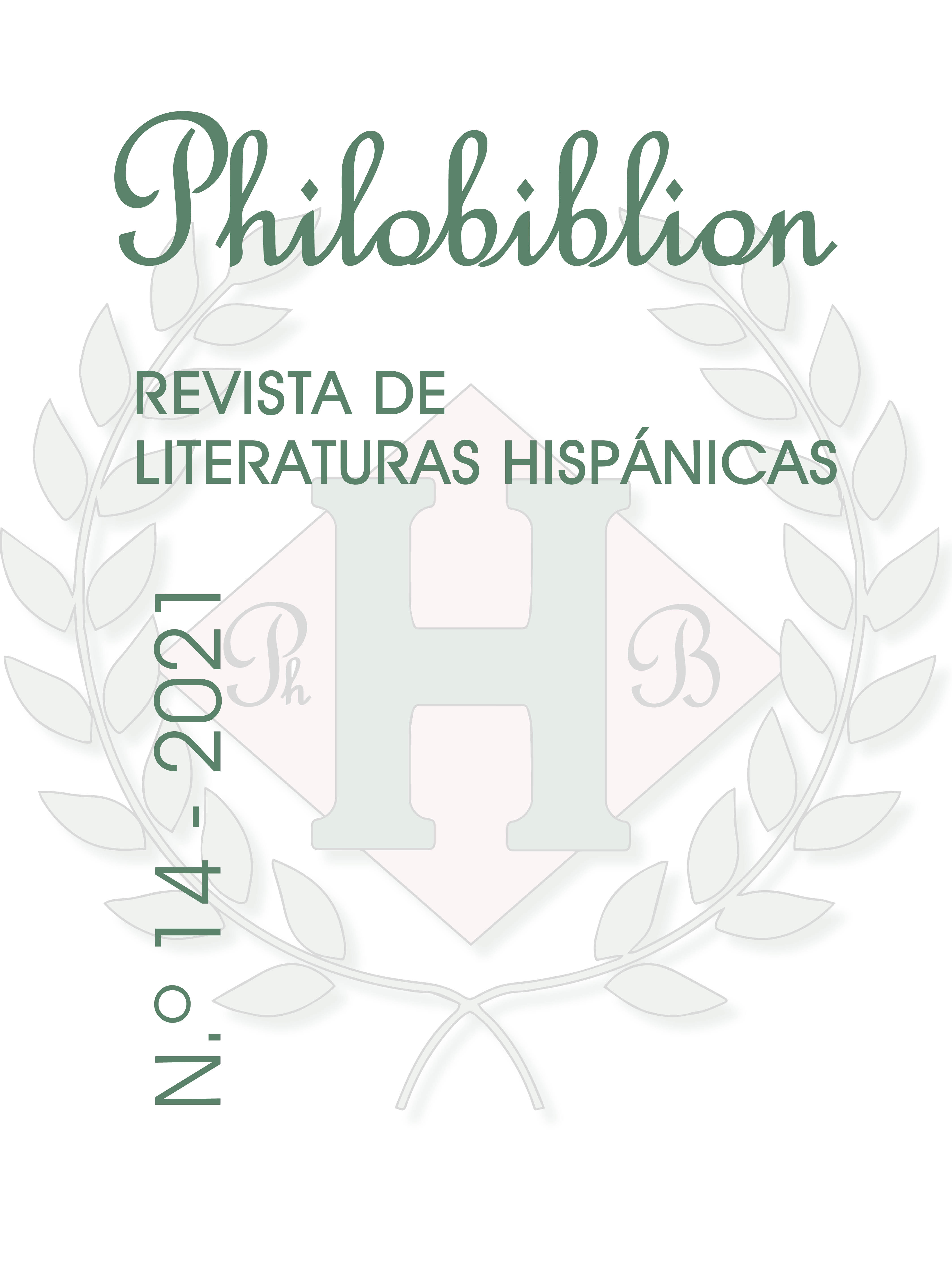Fear and Death in Edgar Allan Poe and their influence in Miguel de Unamuno's "El que se enterró"
Keywords:
Unamuno, Poe, tale, fear, deathAbstract
Miguel de Unamuno's short fiction has a notorious philosophical richness, and it is influenced by many of the most important thinkers and writers in History. The dialectic, key for understanding the nature of his tales, is a fundamental element within his literature, as it confronts opposite forces that are coexistent. This is the logic that can be found in one of his most interesting short stories, “El que se enterró”, which is about death, fear, and life. The influence of Edgar Allan Poe's works is appreciated in this tale, especially in which refers to the treatment of the fear and the presence of the death, which are also basic factors in E.A. Poe's terror Literature. This way, this paper aims to relate both works, studying the concepts of fear and death, observing the importance that they have in Unamuno and Poe. The main goal is analyzing how the North American writer has influenced Unamuno's oeuvre.
Downloads
References
BANTULÀ, María (2015), «Unamuno ante el abismo: un místico agónico». Trabajo de Fin de Grado. Barcelona, Facultat d’Humanitats Universitat Pompeu Fabra.
DOWNING, Gloria e Inge, M. Thomas (1970), «Unamuno and Poe», Poe Newsletter, 2, pp. 3:35-36.
FRANZ, Thomas R. (1997), «Unamuno and the Poe/Valery Legacy», Revista Hispánica Moderna, 50, p. 48.
GABAŠOVÁ, Katarína (2014), «Kierkegaard y el concepto de la muerte en el contexto del turismo oscuro», Sincronía, 65, pp. 71-80.
GRISWOLD, R. Wilmot (1849), «Death of Edgar A. Poe», New-York Daily Tribune, 156, p. 2.
GRÖN, Anne (1995), «El concepto de la angustia en la obra de Kierkegaard», Thémata. Revista de filosofía, 15, pp. 15-30.
KENNEDY, J. Gerald (1987), «The Death of a Beautyful Woman», en Kennedy, J. Gerald, Poe, Death, and the Life of Writing, Michigan, Yale University Press, pp. 60-88.
LLACER, Eusebio (1996), «El Terror en literatura: el diseño de la “Tale” de Poe», REDEN: revista española de estudios norteamericanos, 11, p. 9-24.
MARÍN, Ricardo (2009), «The Treatment of the Sight in Edgar Allan Poe and Gustavo Adofo Bécquer», The Edgar Allan Poe Review, 2, pp. 57-62.
POE, Edgar Allan (1843), «The Tell-Tale Heart», Pioneer, 1 (1), pp.29-31 .
POE, Edgar Allan (1850), «Ligeia», en The Works of the Late Edgar Allan Poe — Vol I: Tales, pp. 453-468.
POE, Edgar Allan (1850), «Morella», en The Works of the Late Edgar Allan Poe — Vol I: Tales, pp. 469-474.
POE, Edgar Allan (1850), «The Masque of the Red Death» en The Works of the Late Edgar Allan Poe-Vol I: Tales, pp. :339-345.
POE, Edgar Allan (1840)< «Preface» a Tales of the Grotesque and Arabesque, The Collected Works of Edgar Allan Poe — Vol. II: Tales and Sketches, p. 56.
POE, Edgar Allan (1849), «The Raven», Richmond Semi-Weekly Examiner, 2 (93), p. 2, col. 4-5.
POE, Edgar Allan (1849), «Annabel Lee» (Text-01a), “Griswold” manuscript.
POE, Edgar Allan (1835), «Berenice», en Southern Literary Messenger, 1 (7), pp. 333-336.
Poe, Edgar Allan (1894), «The Black Cat» The Works of Edgar Allan Poe — Vol. II: Tales II, pp. 42-54.
RIGAL ARAGÓN, Margarita (1997), Aspectos estructurales y temáticos en la narrativa de Edgar A. Poe, Cuenca, Ediciones de la Universidad de Castilla-La Mancha.
RIGAL ARAGÓN, Margarita (2011), «La ciencia del raciocinio», en Rigal Aragón, M. (ed.), Los legados de Poe, Madrid, Editorial Síntesis, pp. 37-70.
SECCHI, Mario (1998), «La filosofía de Unamuno: implicaciones y derivaciones místicas», en Cuadernos de la Cátedra. Miguel de Unamuno, 33, pp. 81-94.
SWARNAKAR, Sudha (2007), «Representation of Death in Edgar Allan Poe and Emily Dickinson», A Cor das Letras — UEFS, 8, pp. 29-41.
UNAMUNO, Miguel de (1983), Del sentimiento trágico de la vida, Madrid, Akal.
UNAMUNO, Miguel de (2011), «El canto adámico», en Narrativa completa, Madrid, Páginas de espuma.
UNAMUNO, Miguel de (2011), «El que se enterró», en Narrativa completa, Madrid, Páginas de espuma.
UNAMUNO, Miguel de (2017), En torno al casticismo, Alicante, Biblioteca Virtual Miguel de Cervantes.
UNAMUNO, Miguel de (1923), La moralidad artística, Salamanca, Casa Museo de Unamuno.
UNAMUNO, Miguel de (2002), Obras completas V. Cancionero, poesías sueltas, traducciones, Madrid, Biblioteca Castro.
VILLAR, Alicia (2013), «La crítica de Unamuno al cientificismo», PENSAMIENTO, 69 (261), pp. 1035-1048.
VILLAR, Alicia (2007), «Muerte y pervivencia en Unamuno». Contrastes. Revista Internacional de Filosofía, 12, pp. 239-250.

